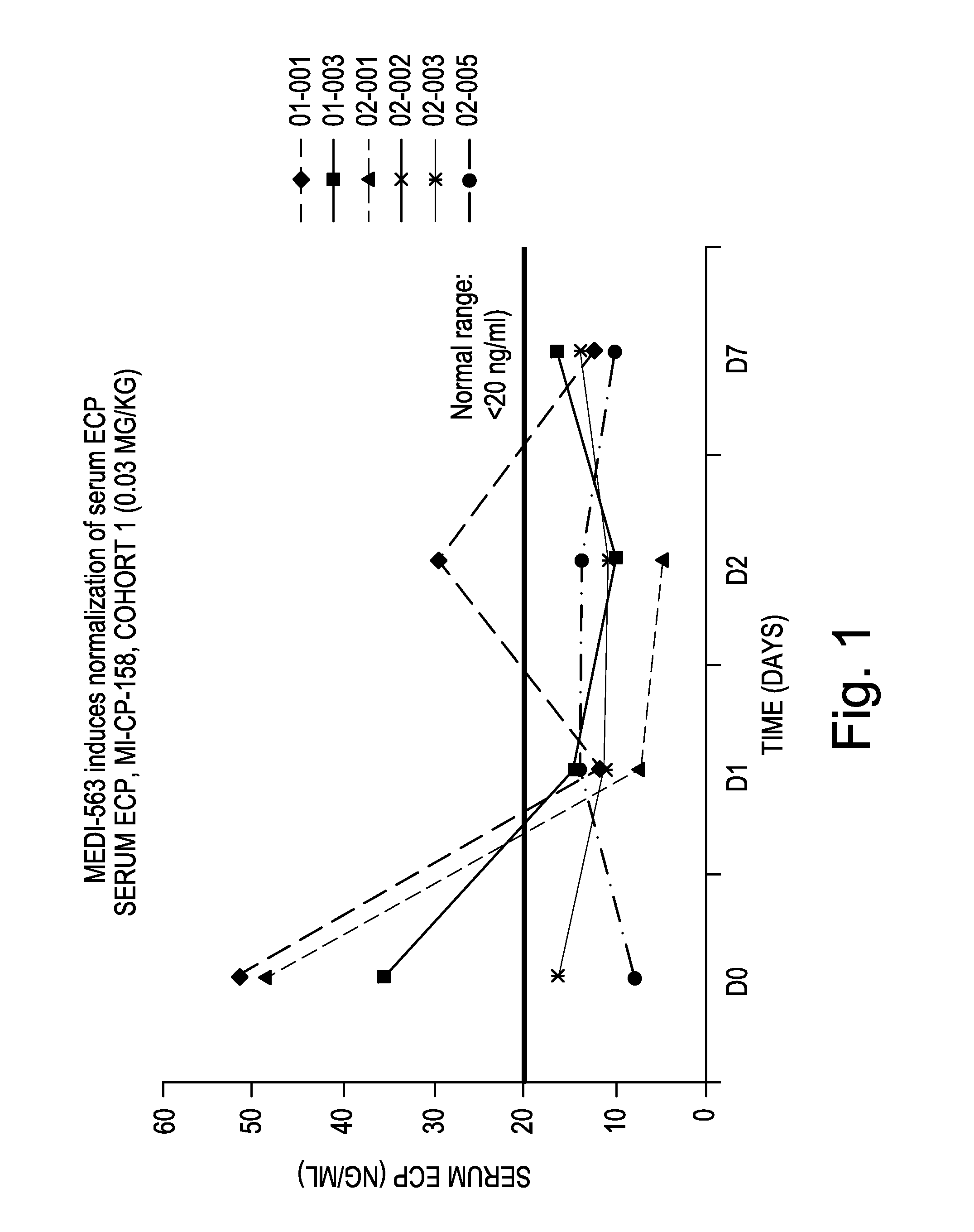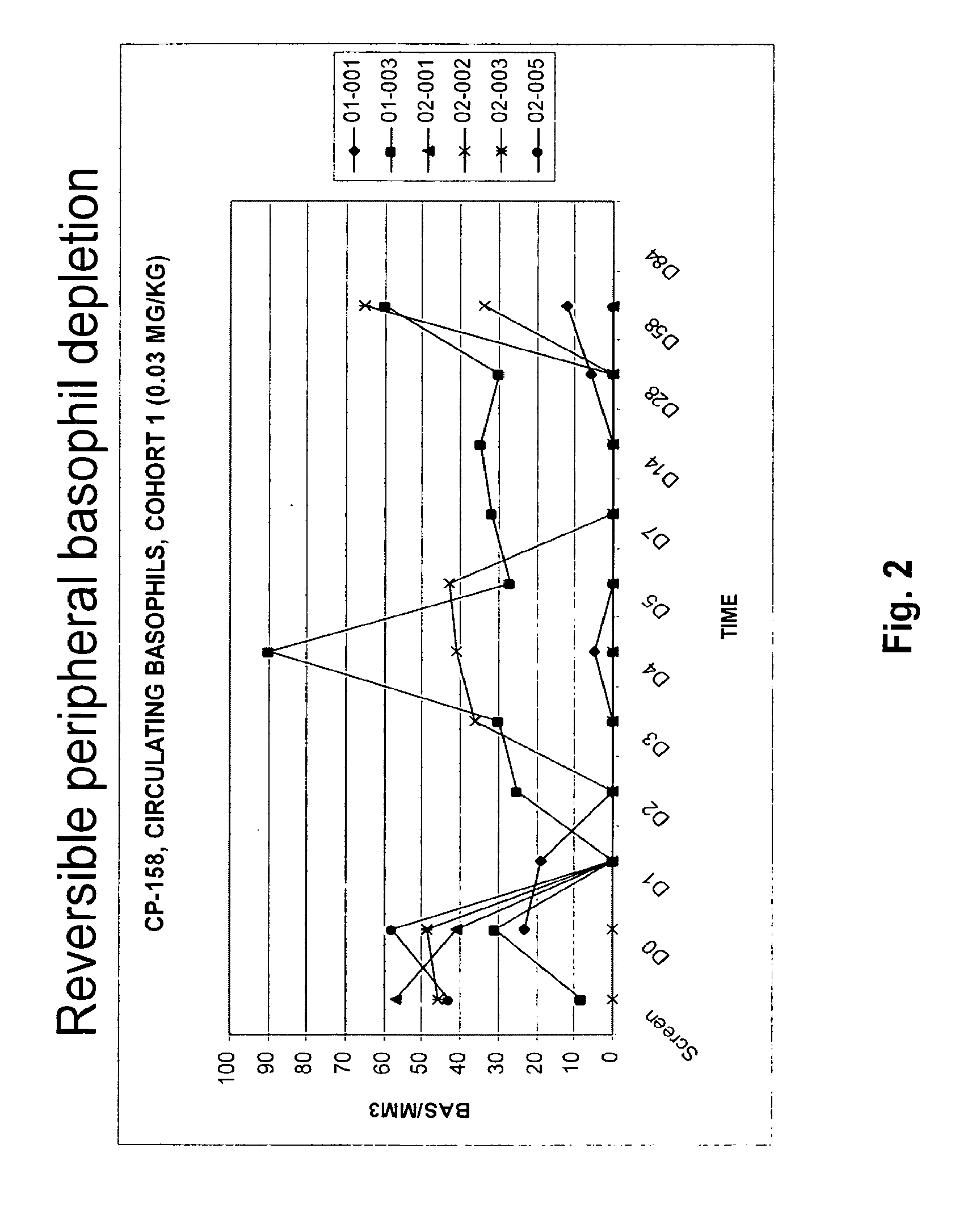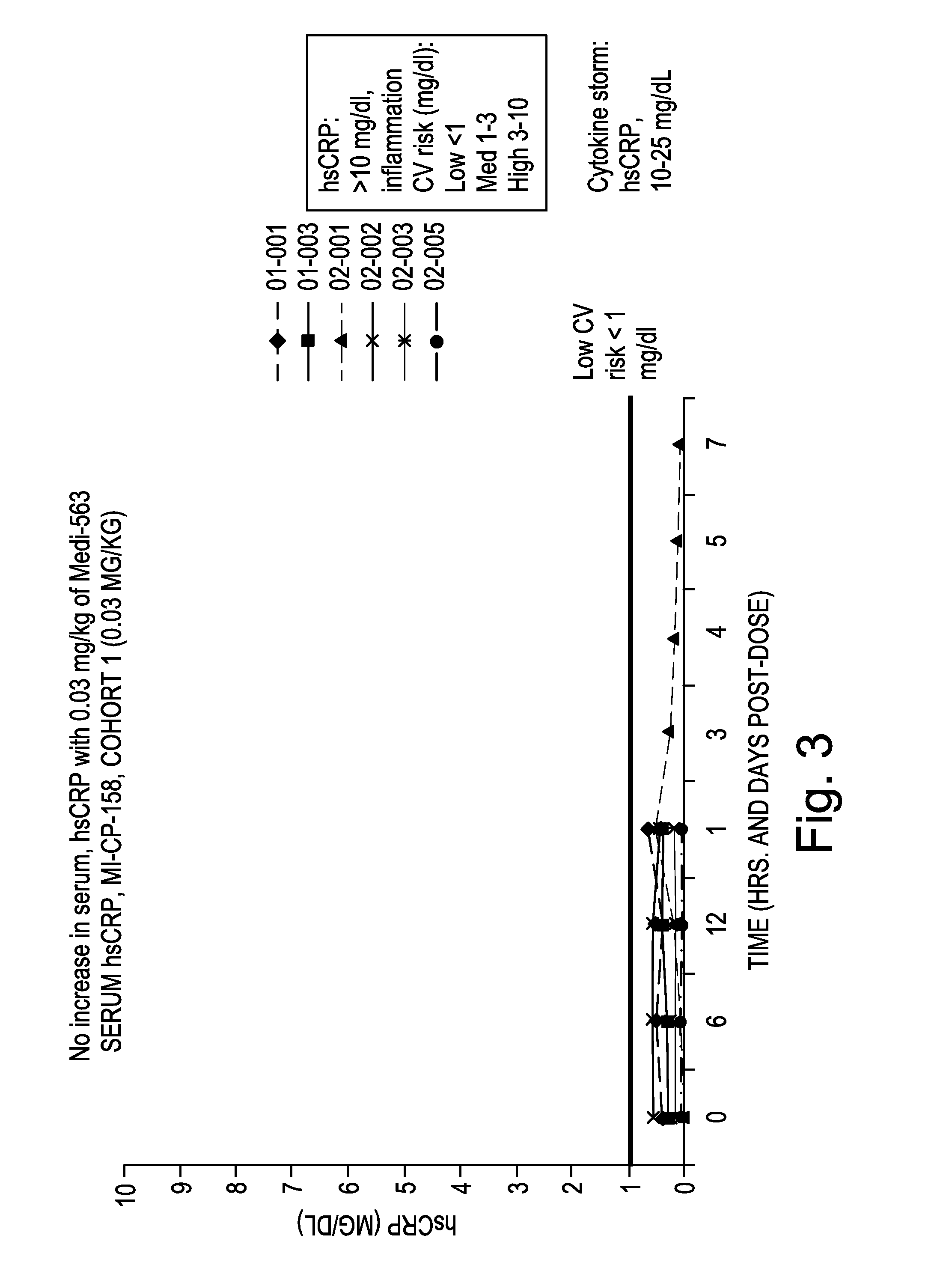Methods Of Reducing Eosinophil Levels
a technology of eosinophils and eosinophils, which is applied in the field of reducing eosinophil levels in human subjects, can solve the problems of steroid administration often associated with side effects, no anti-inflammatory agent, so far, and eosinophils are not known to induce apoptosis of activated eosinophils, etc., and achieve the effect of reducing the number of eosinophils
- Summary
- Abstract
- Description
- Claims
- Application Information
AI Technical Summary
Benefits of technology
Problems solved by technology
Method used
Image
Examples
specific embodiments
[0158]1. A method of reducing the numbers of eosinophils in a human subject comprising administration to said subject an IL-5R binding molecule that comprises (a) a region that specifically binds to the IL-5R and (b) an immunoglobulin Fc region.
[0159]2. The method of embodiment 1, wherein said IL-5R binding molecule is an antibody.
[0160]3. The method of embodiment 2, wherein said antibody is a monoclonal antibody.
[0161]4. The method of embodiment 3, wherein said antibody is a chimeric antibody.
[0162]5. The method of embodiment 3, wherein said antibody is a humanized antibody.
[0163]6. The method of embodiment 3, wherein said antibody is a human antibody.
[0164]7. The method of embodiment 1, wherein said region that specifically binds to the IL-5R comprises the amino acid sequence of IL-5, or fragments, substitutions, or derivatives thereof.
[0165]8. The method of embodiment 7, wherein said region that specifically binds to the IL-5R comprises a nonfunctional variant of IL-5.
[0166]9. Th...
example 1
MEDI-563, an Anti-Interleukin-5-Receptor Antibody, is Well Tolerated and Induces Reversible Blood Eosinopenia in Mild Asthmatics in a Phase I Trial
[0261]Background: Eosinophils are believed to play a key role in the pathogenesis of asthma. Interleukin-5 (IL-5) is a major cytokine in eosinophil biology, and expression of its receptor (IL-5R) is largely restricted to eosinophils, basophils, and mast cells. The suboptimal efficacy of IL-5-targeted therapies in asthma has been attributed to an incomplete depletion of eosinophils in lung tissue. Complete lung eosinophil depletion should provide additional insight into the role of these cells in asthma and could represent a novel therapeutic strategy.
[0262]Objectives: To assess the safety and biological activity of MEDI-563 (previously known as BI W-8405), a humanized afucosylated IgG 1 anti-IL-5R alpha chain monoclonal antibody. MEDI-563 was developed by BioWa, Inc. through proprietary Potelligent® technology that significantly enhances ...
example 2
[0266]Antibody Dependent Cell-Mediated Cytotoxicity
[0267]KC1333 effector cells (human NK cell overexpressing human FcgRIIIa and FceRIg) were co-incubated for 4 hours with target CTLL-2 cell line (mouse lymphoma genetically modified to overexpress human IL-5Ra) at a ratio of 5 effectors:1 target, in the presence of MEDI-563 or control antibody. Antibody mediated cytotoxicity was assessed using a Calcein AM cell viability assay. Results are summarized in FIG. 9A. Using a similar methodology, a further control (fucosylated MEDI-563) was analyzed. Results are summarized in FIG. 9B.
PUM
| Property | Measurement | Unit |
|---|---|---|
| flow rate | aaaaa | aaaaa |
| mass median aerodynamic diameter | aaaaa | aaaaa |
| concentration | aaaaa | aaaaa |
Abstract
Description
Claims
Application Information
 Login to View More
Login to View More - R&D
- Intellectual Property
- Life Sciences
- Materials
- Tech Scout
- Unparalleled Data Quality
- Higher Quality Content
- 60% Fewer Hallucinations
Browse by: Latest US Patents, China's latest patents, Technical Efficacy Thesaurus, Application Domain, Technology Topic, Popular Technical Reports.
© 2025 PatSnap. All rights reserved.Legal|Privacy policy|Modern Slavery Act Transparency Statement|Sitemap|About US| Contact US: help@patsnap.com



